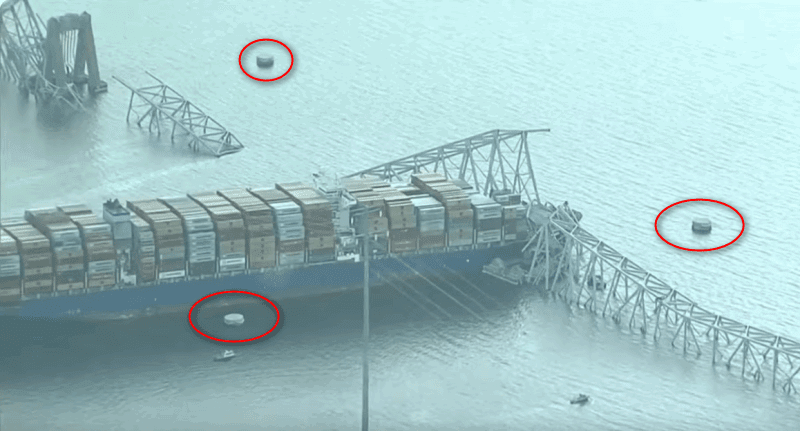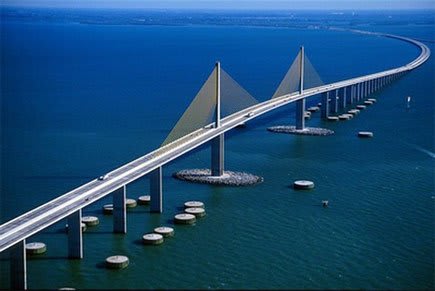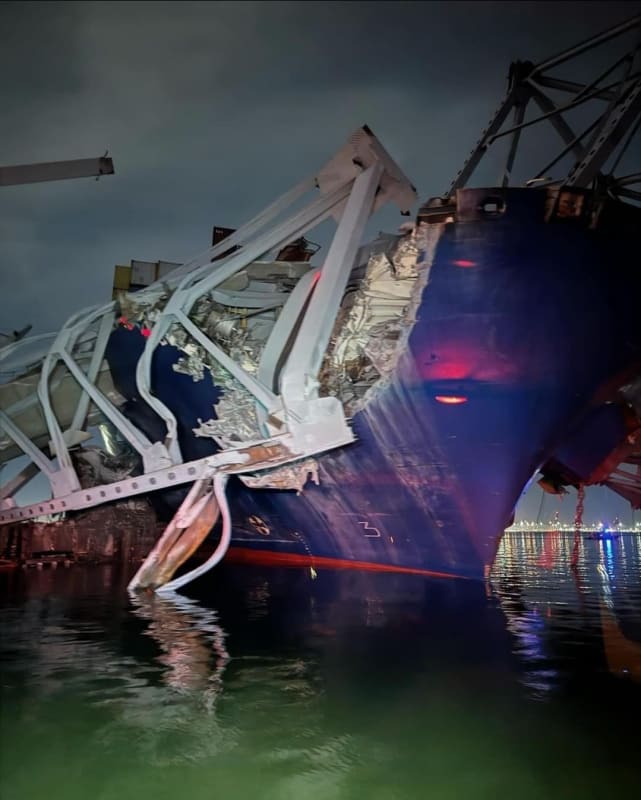Navigation
Install the app
How to install the app on iOS
Follow along with the video below to see how to install our site as a web app on your home screen.
Note: This feature may not be available in some browsers.
More options
Style variation
-
Congratulations MintJulep on being selected by the Eng-Tips community for having the most helpful posts in the forums last week. Way to Go!
You are using an out of date browser. It may not display this or other websites correctly.
You should upgrade or use an alternative browser.
You should upgrade or use an alternative browser.
Baltimore Bridge collapse after ship collision 125
- Thread starter Tomfh
- Start date
- Status
- Not open for further replies.
From gCaptain, about the tugboats:
Full article:
Forum members say many harbors require tugs until the ships are past the bridges.
According to Marine Traffic the ship departed the Seagirt Marine Terminal in the Port of Baltimore at approximately 00:30 local time, sailed northwest past the Nuclear Ship Savanah then turned southeast to depart the harbor, released the tugboats, and collided with the bridge at approximately 01:38.
Full article:
Forum members say many harbors require tugs until the ships are past the bridges.
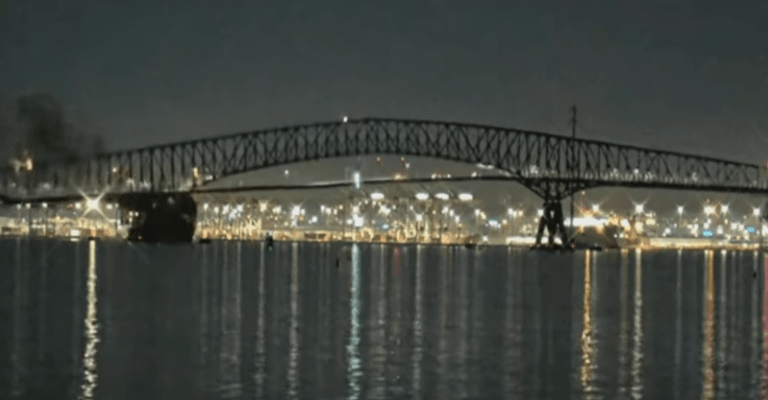
This photo depicts the deck was sinking in a straight line over the demolished pier. This is important as it could only occur if the pier was pushed away or knocked out underneath the bearings. Thus the pier structure has almost zero resistance against such impact. After the collapse the bridge and the broken concrete columns all resting on top of the bow of the container ship.
ZR Shipwright
Marine/Ocean
There are a few reasons they might not have used tugs. My guess is the bridge has a narrow navigable channel based on the after collapse photos showing the bridge pieces sitting on the bottom. That's no more than speculation though.
NOLAscience
Structural
Some basic information: "The Francis Scott Key Bridge, known originally as the Outer Harbor Crossing until it was renamed in 1976, while still under construction, or simply as the Key Bridge or Beltway Bridge, was a steel arch continuous through truss bridge spanning the lower Patapsco River and outer Baltimore Harbor / Port carrying Maryland Route 695 in Baltimore, Maryland, United States. The main span of 1,200 feet (366 m) was the third longest span of any continuous truss in the world.[2] It was the second-longest bridge in the Baltimore metropolitan area, after the Chesapeake Bay Bridge."
Steel was expensive in the 1970s and interest rates were high. I'm sure budgets were stretched to even build this continuous truss bridge. Not an excuse, but redundancy was not a prime consideration in bridge design in the 70s. In any event, this was not a case of a single member failure leading to progressive collapse.
Steel was expensive in the 1970s and interest rates were high. I'm sure budgets were stretched to even build this continuous truss bridge. Not an excuse, but redundancy was not a prime consideration in bridge design in the 70s. In any event, this was not a case of a single member failure leading to progressive collapse.
According to Wikipedia it was initially supposed to be a tunnel but was too expensive.
Wikipedia said:Bids for constructing the proposed Outer Harbor Tunnel were opened in July 1970, but price proposals were substantially higher than the engineering estimates.[11] Officials drafted alternative plans, including a four-lane bridge, which the General Assembly approved in April 1971.[12][13]
At an estimated cost of $110 million, the bridge would have more traffic lanes and lower operating and maintenance costs than a tunnel.[citation needed] A bridge would provide a route across the Baltimore Harbor for vehicles transporting hazardous materials, which are prohibited from both the Baltimore Harbor and Fort McHenry tunnels.[14] The United States Coast Guard issued its bridge permit in June 1972, replacing an earlier approval of the tunnel from the Army Corps of Engineers.[10] Construction of the Outer Harbor Bridge began in 1972,[15] several years behind schedule and $33 million over budget.[16]
Ship size and mass has increased tremendously in the last few decades. Perhaps this will trigger a re-evaluation of all bridges and protections. For example, even if substantial pilings are used, if the overhang of the ships increases enough they can still reach the primary bridge structure. Likewise if the height and width of cargo is high enough they can still reach areas of the bridge previously thought safe.
In the video, a short while after the lights come back on the first time, there is a smoke plume out of the ship's stack, and it continues right up to the strike. I suspect the engine stopped, causing the lights to go out. Then it was restarted, with the plume signifying it had not settled down to a proper running state yet. The second "lights out" is also of interest--did the engine stop again? Was there another restart?
The opening under the bridge is about 1114 feet wide. The ship is about 157 feet wide. The normal route under the San Francisco Bay bridge is 2171 feet wide. In 2007, a container ship hit one of the piers, with no significant damage to the bridge or its supports.
Strikes me that the bridge fenders on the Baltimore bridge were inadequate (as mentioned by others). And the ship got a "lucky" strike, being almost headlong. I also think the clear span of the Baltimore bridge is pretty skimpy, but real bridge folks likely know more than I about it.
The NTSB will issue a report in a year or two, and it will likely be pretty good. Ship has massive failure(s) at exactly the wrong time and hits an inadequately protected bridge.
spsalso
The opening under the bridge is about 1114 feet wide. The ship is about 157 feet wide. The normal route under the San Francisco Bay bridge is 2171 feet wide. In 2007, a container ship hit one of the piers, with no significant damage to the bridge or its supports.
Strikes me that the bridge fenders on the Baltimore bridge were inadequate (as mentioned by others). And the ship got a "lucky" strike, being almost headlong. I also think the clear span of the Baltimore bridge is pretty skimpy, but real bridge folks likely know more than I about it.
The NTSB will issue a report in a year or two, and it will likely be pretty good. Ship has massive failure(s) at exactly the wrong time and hits an inadequately protected bridge.
spsalso
ZR Shipwright
Marine/Ocean
I'm not sure how reply directly to someone. But Spsalso's comment the first time the lights went off the main powerplant went. When the lights kicked back on it was the backup system. Then the second time the lights went off it was the backup power switching back over to main power, hence the plume. Backup power does not provide power to thrusters. Usually only rudder, navigation, and emergency systems.
-
1
- #30
But the plume started before the second time the lights went off.
The lights came back on, the first time, at 2:23
The smoke plume started at 2:35
The lights went off the second time at 3:29
The plume was emitted until impact, or thereabouts.
By the way, Sal's doing his usual great job of covering this event:
spsalso
The lights came back on, the first time, at 2:23
The smoke plume started at 2:35
The lights went off the second time at 3:29
The plume was emitted until impact, or thereabouts.
By the way, Sal's doing his usual great job of covering this event:
spsalso
ZR Shipwright
Marine/Ocean
Right but the backup power stays on until the main power is up and ready.
The sequence is typically
Power goes out - backup automatically kicks in - crew attempts to restart main - main fires back up - crew checks to make sure its holding - crew manually turns off the backup and makes the switch.
The sequence is typically
Power goes out - backup automatically kicks in - crew attempts to restart main - main fires back up - crew checks to make sure its holding - crew manually turns off the backup and makes the switch.
-
1
- #32
Found a drawing of the bridge fender design.
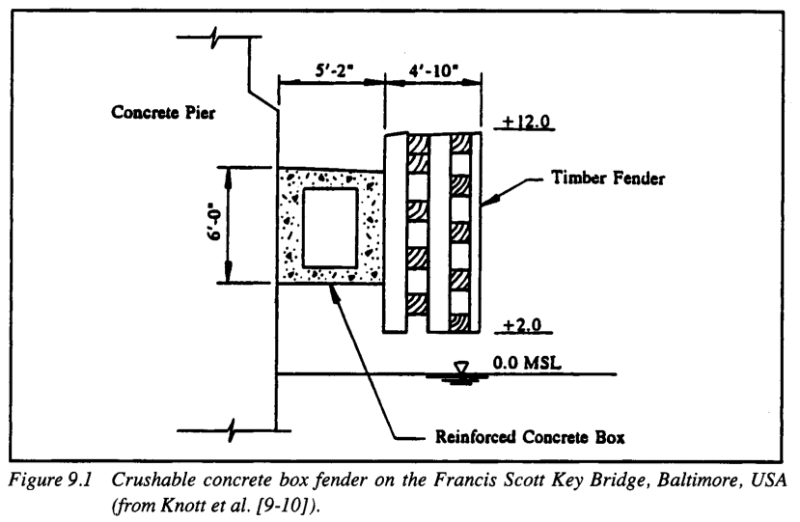
There is a report which analysed the impact resistance of the bridge which I've not been able to find.

There is a report which analysed the impact resistance of the bridge which I've not been able to find.
Knott said:Guide Specification and Commentary for Vessel Collision Design of Highway Bridges”, US Department of Transportation, Federal Highway Administration, Publ. No. FHWA-RD-9 1-006, Dec. 1990
ZR Shipwright
Marine/Ocean
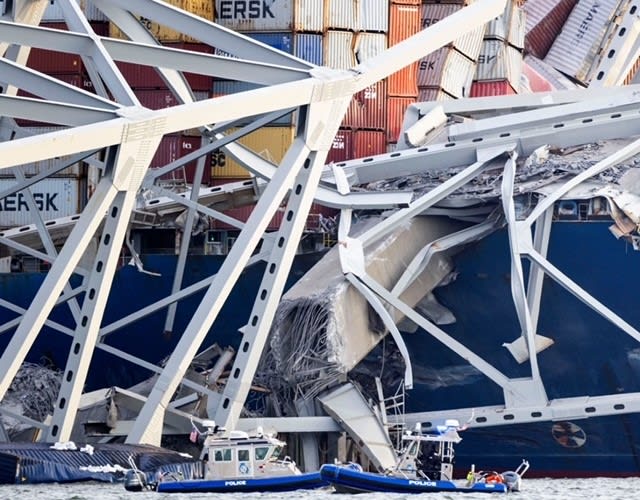
Here's a good photo from the BBC.

And one from CNN.
-
3
- #35
TugboatEng
Marine/Ocean
Lots of smoke and brownout indicates a failing service generator set. The failing unit should have tripped on reverse power and then automatic load shedding should have taken care of the rest. Maybe it's power output was significantly reduced but never went below zero. Perhaps they were trying to bring an additional unit online instead of tripping the failed unit to avoid the hassle of restoring the plant after load shedding.
The safest option could have been tripping all generators and letting the emergency diesel so it's thing. This would have restored steering and engine power within 30 seconds. However, it is a lot of work to bring the plant back to normal after this.
As for tugs, there isn't much we can do if the ship is going more than 6 knots. It takes all of our horsepower to keep up and we don't have any left for maneuvering.
The safest option could have been tripping all generators and letting the emergency diesel so it's thing. This would have restored steering and engine power within 30 seconds. However, it is a lot of work to bring the plant back to normal after this.
As for tugs, there isn't much we can do if the ship is going more than 6 knots. It takes all of our horsepower to keep up and we don't have any left for maneuvering.
TheGreenLama
Structural
This marine traffic video shows the location of the tugs after leaving the Dali. It appears that no attempt is made to reach the ship until just moments before impact. This implies no mayday call was made until late in the process.
Link
Link
NOLAscience
Structural
I regret even bringing this up, but could the power failure be due to a cyber attack? Hope the authorities are recovering and analyzing the software logs.
NOLAscience
Structural
- Status
- Not open for further replies.
Similar threads
- Replies
- 0
- Views
- 3K
- Replies
- 13
- Views
- 13K
- Question
- Replies
- 39
- Views
- 21K
- Replies
- 17
- Views
- 11K
- Replies
- 25
- Views
- 25K

